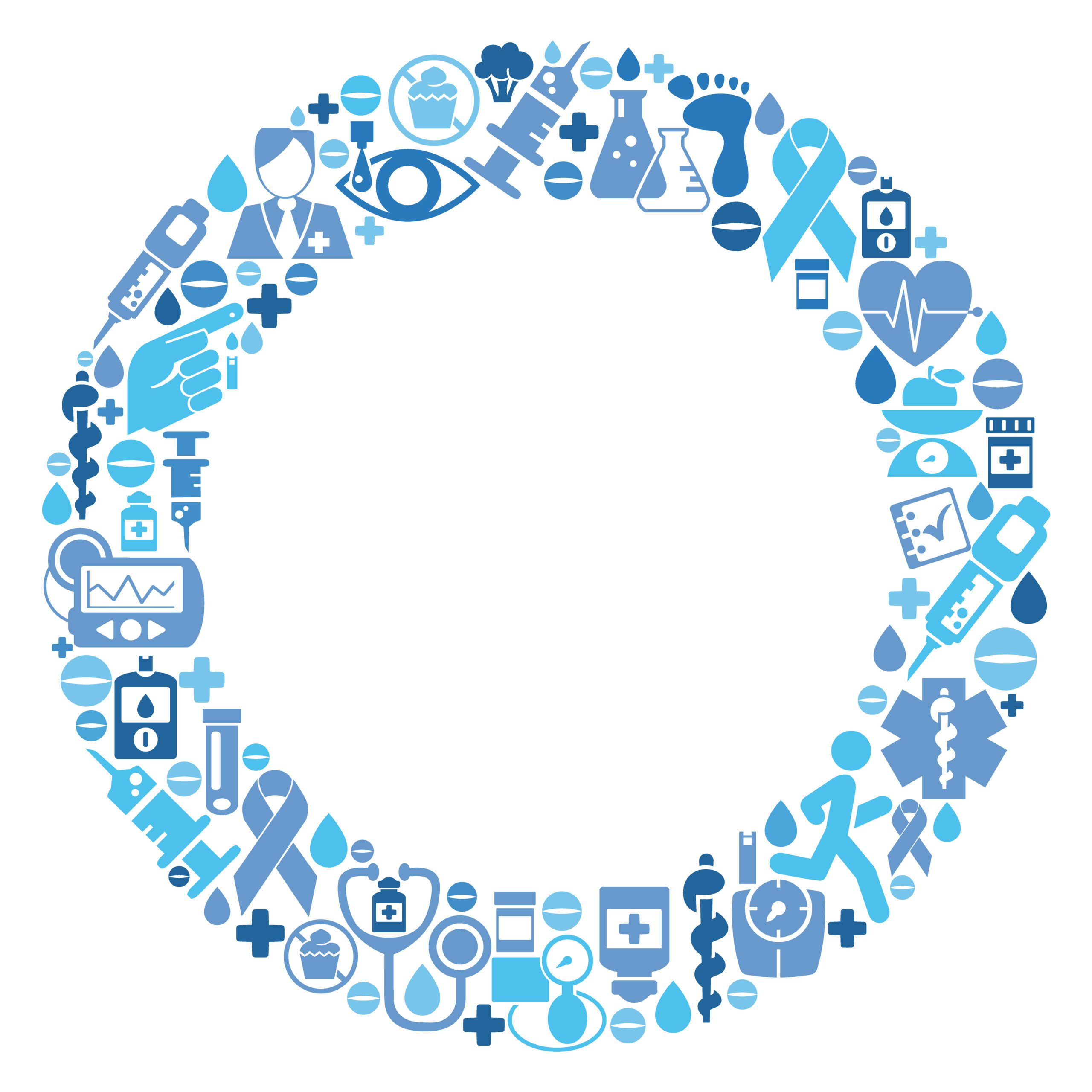
A short while ago, a friend came up to my office, and she told me how her father-in-law wound up in the hospital and came out with a diagnosis of Type-2 diabetes. His doctor sent him home with a booklet about watching his diet, a glucose test kit, and a bag full of syringes and insulin.
She said, “His father had it too, so I guess it was inevitable that he would get it. It’s genetic.” But that is so far from the truth. Not only could it have been prevented – but this man can likely reverse his diabetes just by changing his lifestyle! And he certainly shouldn’t look at insulin as his first course of action.
This really gets me steamed. Diabetes causes untold heartache and suffering, and yet it is preventable and in many cases, reversible. We’ve created this tragedy through our national ignorance of nutrition and mainstream medical mindset that drugs are the only way to cure disease.
More than 90% of diabetes in the U.S. is caused by obesity, poor diet, and lack of exercise – factors that each and every one of us can control. Plus, 80% of the people who develop diabetes in adulthood could reverse it with a healthy diet and lifestyle.
The price of living with diabetes is high. According to the Centers for Disease Control it’s the seventh leading cause of death in the U.S. In 2011, 73,000 Americans died from this disease. In 2010, there were in excess of 635,000 hospitalizations due to diabetes!
Diabetes attacks the body with a vengeance. Diabetics suffer from higher rates of kidney disease, heart disease, greater incidence of high blood pressure, impotence, blindness, and loss of feeling and gangrene in the extremities.
The American Diabetes Association estimated the total costs of diagnosed diabetes at $245 billion for 2012. More than 70% of the total cost was spent on direct medical costs including hospital and emergency care… office visits… and medications.
What’s more, over 1 in 10 health care dollars in the U.S. are spent directly on diabetes and its complications, and more than 1 in 5 health care dollars in the U.S. goes to the care of people with diagnosed diabetes.
Clearly, the status quo medical treatment of this disease has failed.
Diabetes is rare in countries where people eat a diet abundant in unrefined grains and fresh vegetables. When these populations move to the U.S., however, their incidence of diabetes rises. Like heart disease, diabetes is caused largely by nutrient-deficient di- ets of processed and refined foods, and sedentary lifestyles. Given how people deprive their bodies of nutritious foods while pumping themselves full of fats, refined sugars and carbohydrates, I’m amazed that the body functions at any level, let alone for 40 or 50 years without serious illness.
We used to think diabetes was an illness of not enough insulin, which is a hormone secreted by the pancreas. For about 10% of diabetics this is the case, but for the other 90%, diabetes is caused by what we call “insulin resistance.” One of insulin’s jobs is to usher glucose (sugar) into the cells so that it can be used for energy. In diabetics, the insulin is unable to usher glucose into the cell. We don’t know exactly how or why this happens, but it’s interesting that diabetics are deficient in the trace elements nec- essary to make insulin work: chromium, zinc, manganese, and vanadium. Coincidentally, the same minerals are removed when foods are refined and processed.
The result of insulin resistance is too much glucose in the bloodstream, known as high blood sugar. Too much glucose in the blood leads to a condition called acidosis or ketosis, which if not treated promptly causes coma and death. Chronic high blood sugar below the threshold necessary to cause diabetes still causes obesity, high blood pressure, and heart disease.
Because lifestyle changes are given little consideration in mainstream medicine, the treatment to lower blood sugar is oral drugs that regulate blood sugar or insulin, given by injection. Unlike the resistant insulin made by the diabetic’s body, the injected insulin does take glucose out of the blood, thus lowering blood sugar. But I see insulin injections as not much more than putting a Band-Aid on a bullet wound. They do not prevent the complications of diabetes.
The less insulin your need daily, the better your health will be in the long run. And you can reduce your need for insulin (or stay off it completely) with a basic, healthy diet and exercise program…
Most physicians tell their diabetic patients to stick to a high carbohydrate diet and avoid sugars. This approach is a tragic example of how physicians’ ignorance of nutrition harms their patients: Physicians fail to distinguish between refined and complex carbohydrates. Refined carbohydrates, such as bread and pancakes made from white flour, raise blood sugar almost as quickly as white sugar. Cooked potatoes also raise blood sugar rapidly. White rice and pasta do not affect blood sugar as dramatically but should be eaten in moderation.
The key to maintaining normal blood sugar is to eat frequent small meals of complex carbohydrates – such as whole grains, brown rice, beans, nuts and fresh vegetables – with small amounts of protein. Eating unprocessed foods also adds fiber and supplies essential nutrients to the diet, important factors in stabilizing blood sugar.
Finally I can never say enough about exercise. It’s good for everyone, and especially helpful to diabetics because it promotes circulation. Moderate exercise is all you need. If you can’t walk briskly or get aerobic exercise, stretching exercises such as yoga and Tai Chi will do the job.
If you have diabetes, you must work with a health professional and monitor your blood glucose level carefully. Your need for insulin can decrease quickly if you follow my program. Good luck.


In recent years, seed milks have gained popularity as a nutritious and eco-friendly alternative to dairy and other plant-based milks. Marketed as a healthy option, these beverages are often touted for their rich nutrient profiles and sustainability. However, a closer look reveals that not all seed milks are created equal. Many contain hidden ingredients and […]


NOTICE TO THE PUBLIC! A vast array of products seen in American grocery stores are notably absent on European shelves. This is not due to a lack of international trade but rather stringent food safety regulations in the European Union. Many popular American foods are banned in Europe due to concerns about health risks and […]


Did you know that there lurks an invisible ingredient in meat that has been raising health concerns —It is called meat glue- scientifically known as transglutaminase? Transglutaminase is an enzyme used to bind pieces of meat together to create larger, more uniform cuts that creates a seamless appearance. According to the American Meat Institute, it […]